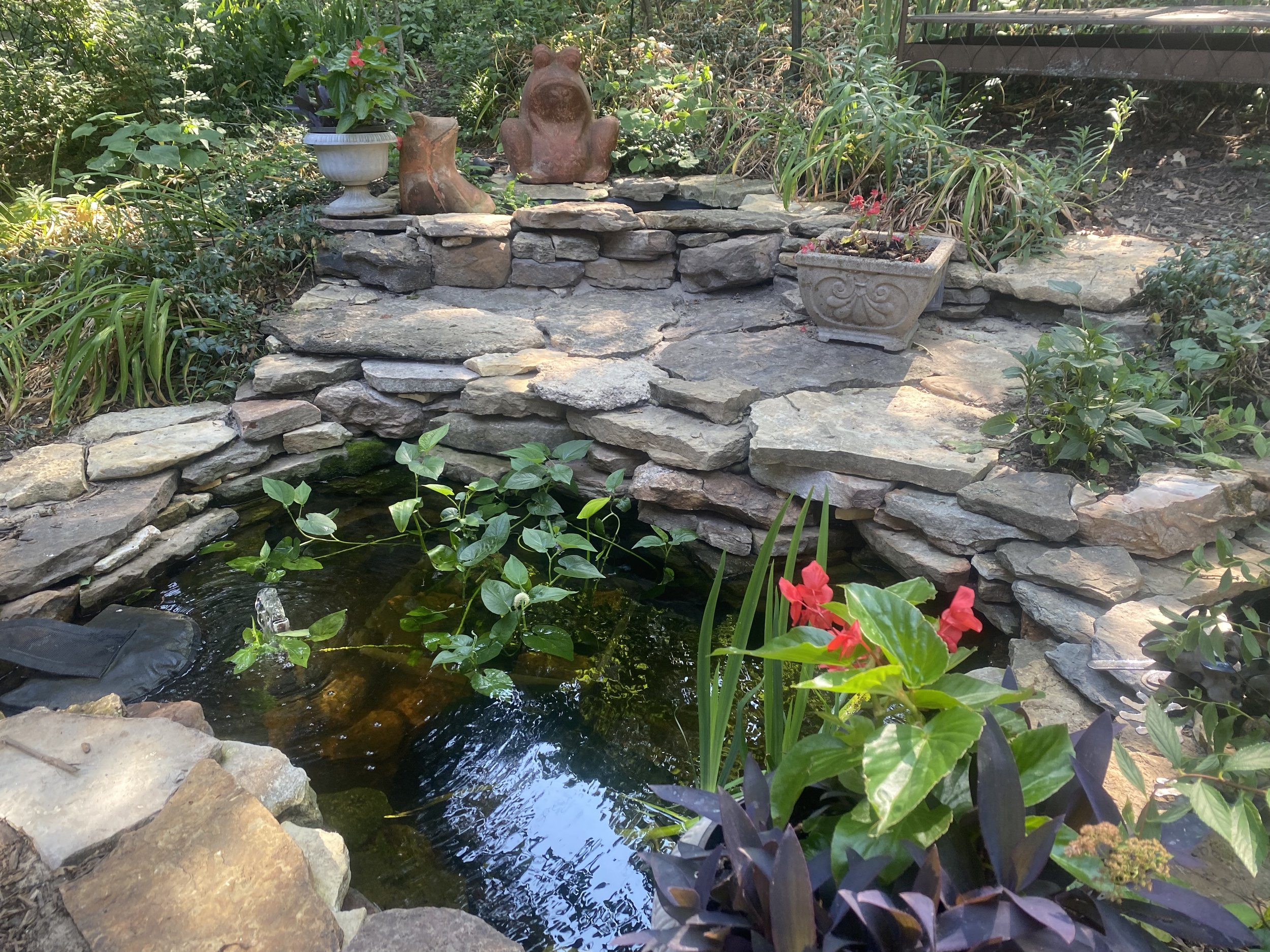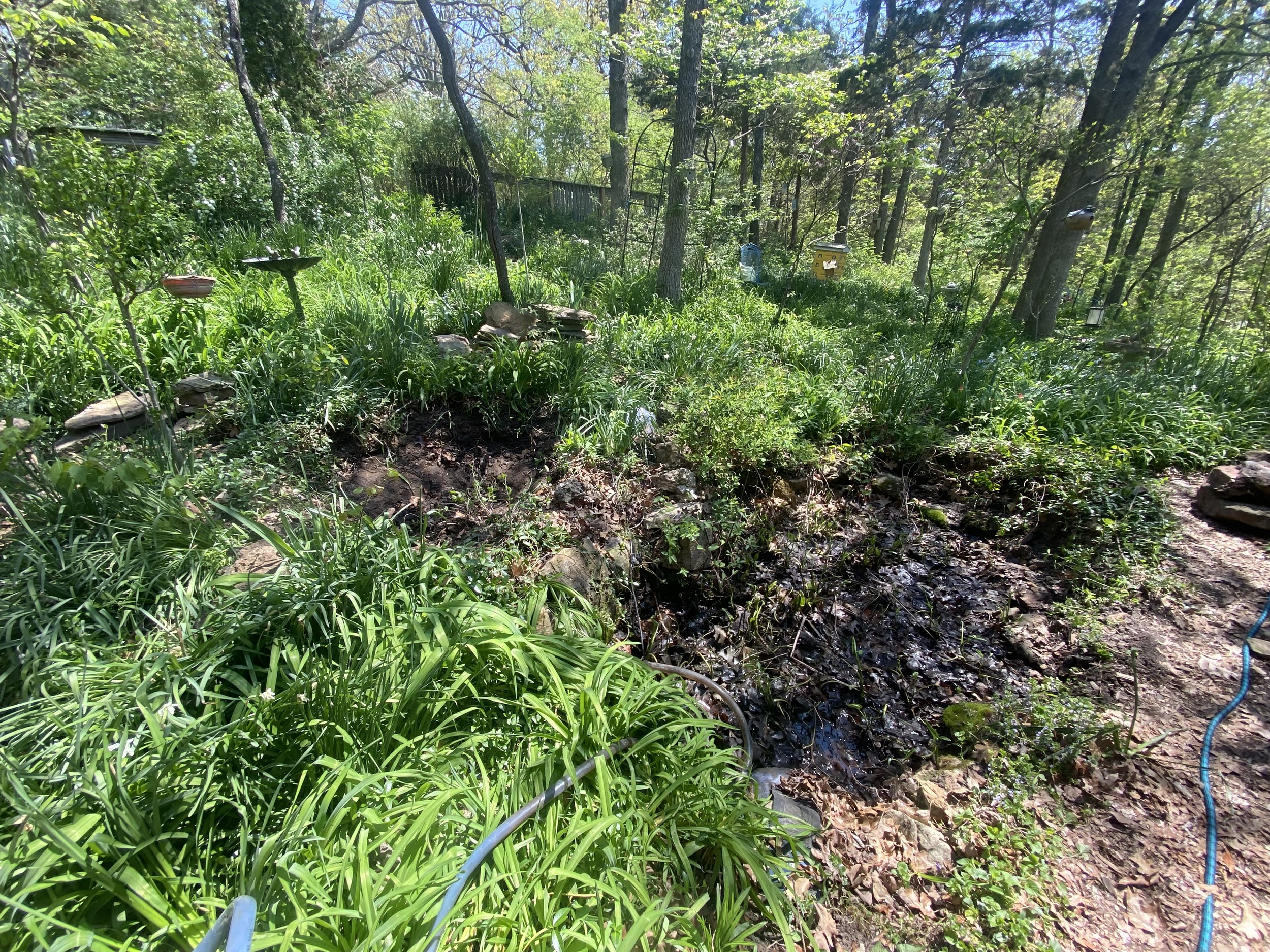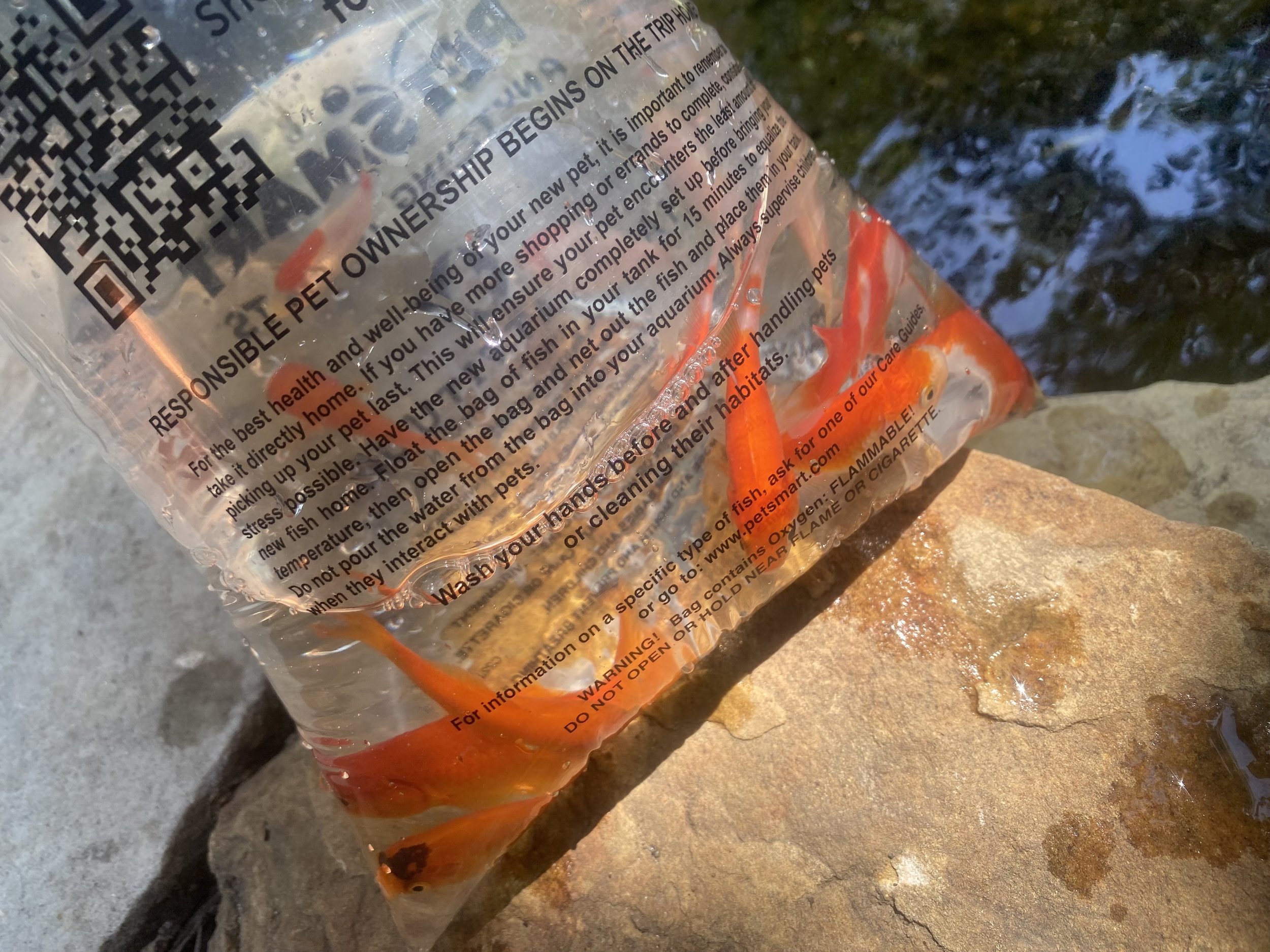Storm Water Garden Ponds
/the updated garden ponds are nicely settling in with water plants and a few goldfish. (charlotte ekker wiggins photo)
Storm Water Garden Ponds
There are many reasons one may want to add small garden ponds. In my case these started as storm water ponds to derail water coming down a hill hitting my house.
The first ponds looked like an old well dumping water into a nearby pond. Two iterations later, plastic pond liners formed two natural-looking watering holes that were quite popular with native wildlife.
this was the original storm water garden ponds with a liner we upgraded. (charlotte ekker wiggins photo)
When I had to replace the liner earlier this spring, my handyman suggested using pond forms instead of pond liners. They will last longer and be easier to maintain, he said. We also could reuse existing rocks as well as a supply a friend donated last year.
I didn’t have any expectations of the results. This needed to be wildlife friendly, including safe spots in case turtles and rabbits fell in.
instead of liners, we used pond forms to make the storm water ponds oonger lasting. (charlotte ekker wiggins photo)
Bees were also using the ponds as a water source, and native frogs had been residents for a number of decades.
By the way, the frogs waited it out. Every end of the day of construction I would find several frogs checking out the new digs.
we reused rocks donated from a friend’s garden and what I already had. (charlotte ekker wiggins photo)
There are now three small ponds, all capable of catching storm water if it ever rains again. We’re in a drought again this year and rain water is precious.
To help keep water clear, I am adding back some aquatic plants from previous ponds. About a dozen goldfish are also part of the ecosystem now, keeping algae and mosquito larvae in check.
When I think of all of the garden nice to haves and must haves, a small pond falls in the must have category. The number of insects and animals that depend on the water source is a reminder that our gardens are homes to other creatures.
















